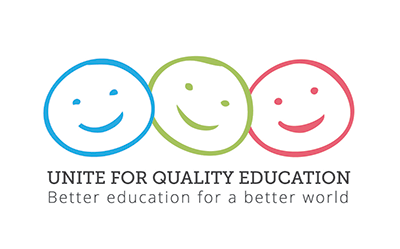The right to education is not only the right to obtain education but also the right to receive an education of good quality.
Quality education must not only be available and accessible but also acceptable and adaptable.
- This is a dynamic concept guaranteed by international law
“Quality is at the heart of education. It influences what students learn, how they learn and what benefits they draw from their education”. -EFA GMR 2005, Education for All – The Quality Imperative
Quality education is a dynamic concept. It changes with time and is subject to social, economic and environmental conditions. However, international human rights law provides a general legal framework that guarantees quality education.
Article 26 of the Universal Declaration of Human Rights – and the main treaties that guarantee the right to education – have defined the aims of education, which has influence on the content of education, teaching and learning processes and materials, the learning environment and learning outcomes.
- Aims of education: beyond acquiring numeracy and literacy skills
According to Article 26 of the Universal Declaration of Human Rights, “Education shall be directed to the full development of the human personality and to the strengthening of respect for human rights and fundamental freedoms”.
This has been reaffirmed and developed in the International Covenant on Economic, Social and Cultural Rights (Article 13.1) and the Convention on the Rights of the Child (Article 29.1), as interpreted by the Committee on the Rights of the Child in General Comment 1: The Aims of Education.
Based on this international legal framework, students must receive a quality education that enables their personalities, talents and abilities and to live a full and satisfying life within society. The aims of education go far beyond acquiring numeracy and literacy skills. Basic skills also include “life skills such as the ability to make well-balanced decisions; to resolve conflicts responsibly, critical thinking, creative talents, and other abilities that can give children the tools needed to pursue their options in life”.
- Curricula, teaching materials and teaching methods have to be acceptable.
Curricula, teaching material and teaching methods have to meet the aims of education as defined by international law.
At primary and secondary level, education has to be “child-centred, child-friendly and empowering“. “Education must be provided in a way that respects the inherent dignity of the child and enables the child to express his or her view and to participate in school life” (General Comment 1: the Aims of Education, Committee on the Rights of the Child).
Any stereotyped concept of the role of men and women has to be eliminated from textbooks and school programmes and the teaching methods have to be adapted (Article 10, CEDAW).
Education has to be adapted to children with disabilities (Article 24, CRPD) and to particular cultural contexts (Article 11, African Charter on the Rights and Welfare of the Child; Article 13 African Youth Charter)
- The learning environment should be adequate, safe and non-violent
There should be an appropriate number of classrooms, accessible to all, with adequate and separate sanitation facilities for girls and boys. Schools should protect from the elements (CESCR, General Comment 13).
School discipline has to be administered in a manner consistent with the child’s human dignity (Article 28.2, CRC) and education must promote non-violence in school (General Comment 1: the Aims of Education, Committee on the Rights of the Child).
For country reports detailing the laws related to corporal punishment of children in schools and summaries of the reforms needed in order to achieve full prohibition, visit: Global Initiative to End All Corporal Punishment of Children
- Quality education and teachers
Teachers are at the heart of quality education.
“The material condition of teaching staff shall be continuously improved” (Article 13.2.e, ICESCR).
Schools should have a sufficient number of trained teachers, receiving good quality pre-service and in-service training with built-in components on gender sensitivity, non-discrimination, and human rights. All teachers should be paid domestically competitive salaries (CESCR, General Comment 13; CRC, General Comment 1).
UNESCO-ILO Recommendation concerning the Status of Teachers provides a comprehensive normative framework on teachers’ status, including their responsibilities, career advancement opportunities, security of tenure and conditions of service.
- Equal quality education and the adoption of minimum standards
According to international law, everyone has the right to receive an education of good quality.
States have “to ensure that the standards of education are equivalent in all public educational institutions of the same level, and that the conditions relating to the quality of the education provided are also equivalent” (Article 4.b, UNESCO Convention against Discrimination in Education).
In addition, States are obliged to adopt minimum educational standards to ensure that all schools, public and private, offer the same quality education (Article 13, ICESCR; Article 29.2, CRC; Article 2, UNESCO Convention against Discrimination in Education).
Quality education has to be the same for boys and girls (Article 10, CEDAW; Article 2, UNESCO Convention against Discrimination in Education).
- Quality education and financing education
Quality education requires “human and financial resources which should be available to the maximum extent possible… therefore, resource constraints cannot provide a justification for a State party’s failure to take any, or enough, of the measures that are required” (CRC, General Comment 1, paragraph 28).
